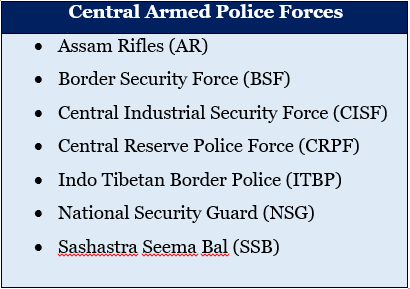7667766266
enquiry@shankarias.in
Mains : GS-II: Structure, organization and functioning of the Executive and the Judiciary—Ministries and Departments of the Government
GS-III: Various Security forces and agencies and their mandate.
The recent transformation of Ministry of Home Affairs by shifting from reactionary interventions to strategic reforms has strengthened India’s internal security architecture and built a future-ready governance framework.

In terms of Entries 1 and 2 of List II ‘State List’ in the 7th Schedule to the Constitution of India, ‘public order’ and ‘police’ are the responsibilities of States.
